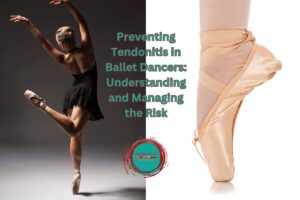From Physiotherapist to Patient
Metacarpal fractures and bone healing
Functioning one-handed following a broken bone in the upper limb is a big challenge. A bigger challenge than I had given my patients credit for in the past but following a cycling accident resulting in a fractured second metacarpal I now have an increased understanding and awareness of the patient experience.
 The metacarpals are long bones in the hand that connect the carpal bones (wrist and hand bones) to the phalanges (finger bones). Metacarpal fractures can be as a result of a hand punching a solid object with a closed fist or through trauma such as a fall. Like many injuries, the fracture presents with pain, swelling, limited movement and in some cases where the bone is displaced, you may see rotational deformity of the fingers. An x-ray is performed to diagnose a fracture and decide on the management.
The metacarpals are long bones in the hand that connect the carpal bones (wrist and hand bones) to the phalanges (finger bones). Metacarpal fractures can be as a result of a hand punching a solid object with a closed fist or through trauma such as a fall. Like many injuries, the fracture presents with pain, swelling, limited movement and in some cases where the bone is displaced, you may see rotational deformity of the fingers. An x-ray is performed to diagnose a fracture and decide on the management.
In early October last year, I was cycling with a group of friends when I hit a sharp piece of brick in the road on a descent, causing my tyre to blow, wheel to buckle and, unsurprisingly, a loss of control! Luckily my cycling group included another physio and a GP so I was in safe hands as they scooped me off the curb. My x-ray revealed a second metacarpal fracture, with minimal displacement which meant it could be treated conservatively (without an operation).
From that evening onwards I began to see the difficulty of one-handed living! Simple activities such as washing my hair, dressing and preparing food all became time consuming. But it is amazing how the body adapts. It wasn’t long before my one-handed typing improved, my one-handed dressing became quicker, and luckily I had friends rallying to cut up my meals!
 In the first few days after a fracture a haematoma begins to form, known as the inflammatory stage. At this stage my fingers and hand were splinted to decrease the risk of the fracture moving and to control the pain. In the subsequent weeks new soft bone called callus is formed to bridge the gap within the broken bone. After 6 to 7 weeks the new bone begins to strengthen and immobilisation (such as a plaster or in my case a splint) can be relaxed.
In the first few days after a fracture a haematoma begins to form, known as the inflammatory stage. At this stage my fingers and hand were splinted to decrease the risk of the fracture moving and to control the pain. In the subsequent weeks new soft bone called callus is formed to bridge the gap within the broken bone. After 6 to 7 weeks the new bone begins to strengthen and immobilisation (such as a plaster or in my case a splint) can be relaxed.
 As a physiotherapist knowing the time frame of six weeks for fractured healing it was a relief to get to this stage. At this point I felt I could more actively participate in my rehabilitation. I knew that the bone would continue to remodel and strengthen for a further six weeks, but it was time to be in a more structured exercise programme. With specialist instruction from a hand therapist I was soon moving and strengthening my hand with soft sponges and putty. The therapist gave me the confidence to progress throughout this time and eventually after 12 weeks I got back on my bike for a lap of Richmond Park using my hand to strongly apply the brakes.
As a physiotherapist knowing the time frame of six weeks for fractured healing it was a relief to get to this stage. At this point I felt I could more actively participate in my rehabilitation. I knew that the bone would continue to remodel and strengthen for a further six weeks, but it was time to be in a more structured exercise programme. With specialist instruction from a hand therapist I was soon moving and strengthening my hand with soft sponges and putty. The therapist gave me the confidence to progress throughout this time and eventually after 12 weeks I got back on my bike for a lap of Richmond Park using my hand to strongly apply the brakes.
Breaking my hand is definitely not something I would like to experience again but, like any bad experience, there is an opportunity to reflect and learn. This experience of a fracture and coping one-handed has allowed me a deeper understanding of the elements of a patient’s experience in my specialist field of trauma and orthopaedics.





Comments